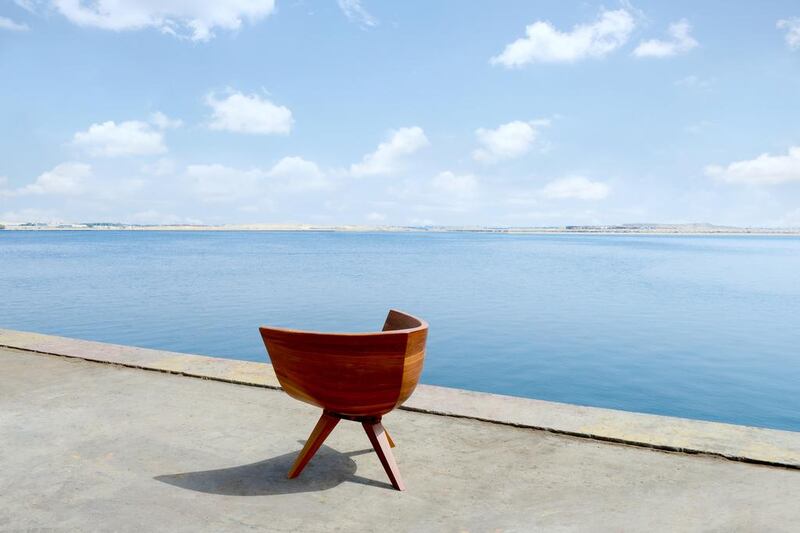Everything on display in Tashkeel’s gallery from this week was, as the name suggests, made on site.
The annual show, Made in Tashkeel, is a chance for artists, designers and photographers to showcase their work as a visual summary of the year gone by.
Resident artist Marwan Shakarchi, who goes by the pseudonym Myneandyours and is known for his cloud symbol with x-marks for the eyes, chose to feature a new work titled Something to Believe In. In the image, a woman is releasing a dove into a sky filled with his clouds.
“In this piece, I knew I wanted to send a message of hope. I knew this because I had come across people who didn’t seem to believe in it any more,” he says.
Printmaker Salama Nasib is a 27-year-old Emirati who used to work as the studio coordinator at Tashkeel before quitting to concentrate on her own art career. Her untitled piece on display is whimsical and surreal: a pencil-drawn circle filled with waves resembling hair, which then morphs into an image of a skyline. From the circle, a tree emerges and from this, several origami crane birds are hanging. The entire image has been transformed into a screen-print, a medium that Nasib has spent the year exploring.
“I am always passionate about printmaking,” she says. “When I make an artwork, I think of how to make that in a print.
“For this image, there are many different sources for my inspiration. I love drawing trees and dry branches and I have always loved origami – that and the hair is part of my earlier artworks. So I looked at those elements together.”
Also in the show are the four students from this year’s Tashkeel Design Programme. The programme, in collaboration with PAL Labs, a British organisation that facilitates innovative work by designers and makers, was a series of two-day workshops led by established designers and curators over the course of nine months.
The designers were asked to take inspiration from their surroundings – hence Rand Abdul Jabbar’s design of a table and chair made to resemble the structure of a dhow.
“My work was in collaboration with a dhow builder in Jeddah,” she says. “I used the same logic and technique of dhow building, and wood sourced from the Jeddah wood mills. The builders created the drawings for the dhow and I took the curves and manipulated them to create the different forms.”
Her series, titled Forma, was the first project she worked on after graduating with a master's degree in architecture from Columbia University last year.
Saher Oliver Samman, a designer who spends his time in the UAE and London, put together a rocking hammock made from locally sourced leather, and stitched together using saddlery techniques.
“I first thought of the idea in Vietnam, where many people use hammocks,” he says. “But without Tashkeel and the design programme it would never have happened. The whole design and ethos of the hammock is reflective of the mood of UAE. The overall aesthetic evokes the desert region, with the colours and the material, and it was inspired by all that I was surrounded by in Dubai and in the Nad Al Sheba area.”
Having the opportunity to exhibit in such an established and prominent institution as Tashkeel can prove to be an excellent launch pad for these young, aspiring professionals.
“It is a great place,” says Nasib. “There is no other place like it in the UAE. It is unique and important and they support us through all our projects.”
• Made in Tashkeel runs until August 20 at Tashkeel, Nad Al Sheba, Dubai. For more information, visit www.tashkeel.org
aseaman@thenational.ae





